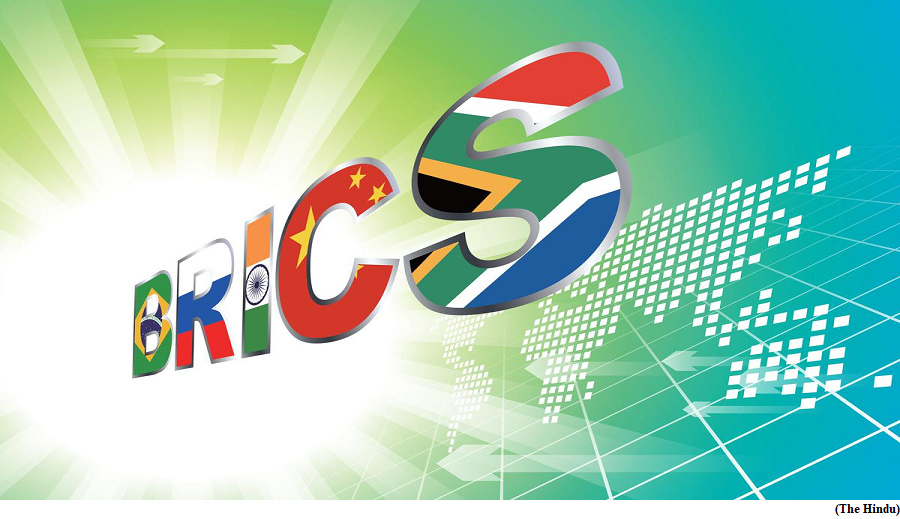The paradox of BRICS, its new pathway (GS Paper 2, International Organisation)

Context:
- BRICS may have lost much of its sparkle, but a long queue of nations awaits membership.
Details:
- Despite several achievements, it began to lose its sparkle. COVID-19, the Galwan clash, and the Ukraine conflict resulted in increased global economic stress, damaged India-China ties, and turned Russia into a diminishing power.
- The group may have lost its mojo, but numerous nations want to be admitted, thus showing the paradox of BRICS.
Dormant multilateral groupings:
- The Non-Aligned Movement (NAM) and G-77 had their heyday in the Cold War era. Later they lost their relevance, but they still exist.
- The South Asian Association for Regional Cooperation (SAARC) summits ended in 2014, but the Secretariat somehow keeps itself busy.
- Despite serious policy divergences on China and Myanmar, the Association of Southeast Asian Nations (ASEAN) continues to function, consuming reams of paper to issue long communiqués.
History:
- In 2001, Goldman Sachs’ Jim O’Neill authored a paper called “Building Better Global Economic BRICs”, pointing out that future GDP growth in the world would come from China, India, Russia and Brazil.
- He also suggested that the G-7 group needed revamping after the introduction of a common currency for Europe, the euro, in 1999.
- In 2006, leaders of the BRIC countries met on the margins of a G-8 (now called G-7) summit in St. Petersburg, Russia, and BRIC was formalised that year. The global financial crisis of 2007-08 reinforced the idea as BRIC countries had been relatively unscathed in the market collapse.
- On June 16, 2009, Prime Minister Manmohan Singh met with Presidents of China, Russia and Brazil for the first BRIC summit in Yekaterinburg, and South Africa was subsequently admitted two years later.
BRICS over IBSA:
- Jim O’Neil’s conception of BRIC, a grouping of four emerging economies (Brazil, Russia, India, and China), may not have gone far but it was a popular acronym over two decades ago. However, two of its components joined hands with South Africa to form IBSA (India, Brazil, South Africa) in 2003.
- China was keen to join it in the century’s first decade and managed to enlist South Africa’s support. But Brazil and India would not go along, maintaining that the forum was open to democracies only.
- Rebuffed, China played a trump card, and decided to bring South Africa into BRIC, thus turning it into BRICS. Soon, the new club overshadowed the old one. IBSA has been unable to hold its summit since 2011. But BRICS has held 14 summits in the past 13 years.
Geopolitical & Economic dimensions:
- By articulating a common view on key global and regional issues, it projected a non-western view. This strengthened the world’s march towards multipolarity, thus helping to curb the dominating influence of the West.
- On the economic front, it launched new initiatives:
- the New Development Bank which has committed $32.8 billion in 96 projects;
- the Contingent Reserve Arrangement (CRA), a financial mechanism to protect against global liquidity pressures; and
- A comprehensive programme to expand trade and investment cooperation among the five-member countries.
Negative tendencies:
- If the IBSA trio within the BRICS expected that China and Russia would fully back their bid to secure membership of the UN Security Council, they were disappointed.
- The century’s second decade was also the era of China’s dramatic economic rise and, more importantly, military assertiveness. This disturbed the group’s inner balance.
- The post-Ukraine consolidation of Russia-China cooperation, economic malaise in South Africa that accelerates dependence on China, and Brazil’s long fling with rightist policies followed by the return of a tired Lula da Silva as the President, have generated new tensions.
- China’s push for a common currency for intra-BRICS trade is also symptomatic of the group’s inner troubles.
Rush for Membership:
- Yet, 19 countries now stand in line, eager to join BRICS. The regional breakup is as follows:
- Latin America (four) – Argentina, Nicaragua, Mexico and Uruguay;
- Africa (five) – Nigeria, Algeria, Egypt, Senegal and Morocco; and
- Asia (10) – Saudi Arabia, the United Arab Emirates (UAE), Türkiye, Syria, Iran, Afghanistan, Indonesia, Thailand, Kazakhstan and Bangladesh.
Why these countries are eager to join BRICS?
- China is pushing the expansion as a strategic device to extend its global influence.
- The demand to join BRICS stems from FOMO or ‘fear of missing out’ on the membership of a club that has some visibility. Third, many realize that the doors of other groupings are closed to them.
- It reflects prevailing anti-western sentiments and a pervasive desire to create a sizeable forum of the Global South.
Expansion & BRICS Summit 2023:
- The next BRICS summit will be hosted by South Africa on August 23-24. It could take decisions on expansion and its criteria. Preparatory meetings of the Foreign Ministers and the National Security Advisers are certain to deliberate on this subject.
- Three options are available:
- A mega expansion that raises the membership from five to 21, thus surpassing the G-20;
- limited admission of 10 new members, two each supported by an existing member; and
- admission of only five new members, one each supported by an existing member, with none of the other four using their veto.
- India favours expansion if it is based on agreed criteria and moves gradually. Should the third option win consensus, Argentina, Egypt, Indonesia, UAE and Bangladesh are the most likely states to make the cut.
Way Forward:
- When the leaders talk, they should reflect on strengthening BRICS and redressing the internal imbalance.
- They should also know that once new members are admitted, they will certainly seek to change the group’s name. Perhaps then the grouping’s future will be better than its past.


